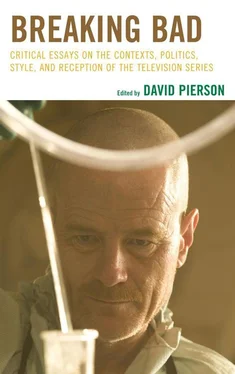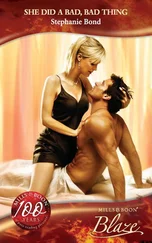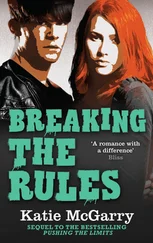There was a time when, in the United States, Asia was viewed as the source of illicit drugs. Although opium had long since peaked by the transition from the nineteenth to the twentieth centuries, it was not until after World War II that Latin America had firmly replaced Asia in the American consciousness as the source of drugs. The finality of this shift came at a time when the rise of a youth culture brought with it unprecedented divisions between generations, a distinction that would manifest itself most fully in the 1960s. Distrust of the youth and concern over the growing volume of Latino immigration combined following World War II in a renewed fear of marijuana and several decades later in a fear of Colombian cocaine. Not surprisingly, media portrayals of Latinos, which had long been tinged with racism, now began embracing specific stereotypes associated with the drug culture. Patterns of stereotypical portrayal have often been accompanied by political engagement among those combatting these patterns. Certain projects in film and television began to avoid conforming to normative and simplistic representations of Latino identity. Charles Ramirez Berg (1992) notes that there are positive and negative ways of going about this, but that representations that aim for complexity allow for a greater awareness among audiences (40-46). In Breaking Bad , Gilligan offers up portrayals of Latino identity across a very wide spectrum. It is important to note that, with the exception of Gustavo Fring, the majority of the Latino characters that populate his narrative are secondary in nature; indeed, the two main characters are Anglo. Gilligan’s project of portrayal is thus not oppositional filmmaking as noted by Chon Noriega, but instead one of cultural complexity. In other words, instead of Mexican-American filmmakers such as Luis Valdez and Cheech Marin, and Mexican filmmakers such as Alejandro Iñárritu, directors who have purposely shone a light on multi-faceted aspects of Latino identity, Gilligan has been more about investing his narrative with as much complexity as possible. In doing so, the series has undermined numerous Latino stereotypes, making the characters who populate Breaking Bad anything but average.
A Better Tomorrow . Directed by John Woo. Troy: Anchor Bay Entertainment, 1986. DVD.
Assassin of Youth . Directed by Elmer Clifton. Narberth: Alpha Video, 2004. DVD.
Associated Press. “Escobar Had Ritzy Prison.” The Register Guard . 4 August 1992.
Berg, Charles Ramirez. “Bordertown: The Assimilation Narrative and the Chicano Social Problem Film.” In Chicanos and Film: Essays on Chicano Representation and Resistance , edited by Chon Noriega. 29-46. New York: Garland, 1992.
Blow . Directed by Ted Demme. New York: New Line Cinema, 2001. DVD.
Casino . Directed by Martin Scorcese. Universal City: Universal Pictures, 1995. DVD.
Central Intelligence Agency. “CIA Activies in Chile.” 19 September 2000. http://www.gwu.edu/~nsarchiv/news/20000919/01-01.htm.
de la Mora, Sergio. Cinemachismo: Masculinities and Sexuality in Mexican Film . Austin: University of Texas, 2006.
Easy Rider . Directed by Dennis Hopper. Culver City: Sony Pictures, 1999. DVD.
Frogoso, Rosa Linda. The Bronze Screen . Minneapolis: University of Minnesota Press, 1993.
GoodFellas . Directed by Martin Scorcese. Burbank: Warner Brothers, 1990. DVD.
Dominguez-Ruvalcaba, Héctor and Ignacio Corona. Gender Violence at the U.S.-Mexico Border: Media Representation and Public Response , edited by Hector Dominguez-Ruvalcaba and Ignacio Corona. Tucson: University of Arizona Press, 2010.
———. Modernity and the Nation in Mexican Representations of Masculinity: From Sensuality to Bloodshed . New York: Palgrave, 2007.
Kingpin . Created by David Mills. National Broadcasting Company, 2003. Television.
Koepsell, David R. and Robert Arp, eds. Breaking Bad and Philosophy: Badder Living Through Chemistry . Chicago: Open Court, 2012.
Larson, Stephanie Greco. Media and Minorities: The Politics of Race in News and Entertainment . Lanham: Rowman & Littlefield, 2006.
Limón, José E. “Stereotyping and Chicano Resistance: An Historical Dimension (1973).” In Chicanos and Film: Essays on Chicano Representation and Resistance, edited by Chon Noriega. 3-17. New York: Garland, 1992.
Lone Star . Directed by John Sayles. Burbank: Warner Brothers, 1995. DVD.
“Mexico Under Siege: The Drug War at our Doorstep.” Los Angeles Times . 9 October, 2012. http://projects.latimes.com/mexico-drug-war/#/its-a-war.
No Country for Old Men . Directed by Joel Coen and Ethan Coen. New York: Miramax, 2007. DVD.
O’Reilly, Andrew. “Mexico’s Drug Death Toll Double What Reported, Expert Argues.” August 10, 2012. http://latino.foxnews.com/latino/news/2012/08/10/mexico-drug-death-toll-double-what-reported-expert-argues/.
Peñalosa, Fernando. “Towards an Operational Definition of the Mexican American.” In The Chicano-Studies Reader: An Anthology of Aztlan 1920-2010 , edited by Chon Noriega et al. 16-27. Los Angeles: University of California Press, 2010.
Reefer Madness . Directed by Louis Gasnier. Beverly Hills: Walking Shadows, 2010. DVD.
Rodriguez, Clara E. Latin Looks: Images of Latinas and Latinos in the United States Media . Ed. Clara E. Rodriguez. Oxford: Westview, 1997.
“Santa Muerte.” Time . October 12, 2012. http://www.time.com/time/photogallery/0,29307,1676932_1474285,00.html.
Scarface . Directed by Brian De Palma. Universal City: Universal Pictures, 1983. DVD.
The Killer . Directed by John Woo. New York: Fox Lorber Films, 1989. DVD.
The Treasure of Sierra Madre . Directed by John Huston. Burbank: Warner Brothers, 1948. DVD.
Touch of Evil . Directed by Orson Welles. Universal City: Universal Pictures, 2000. DVD.
Traffic . Directed by Steven Soderbergh. New York: USA Films, 2001. DVD.
Turner, Frederick Jackson. History, Frontier, and Section . Albuquerque: University of New Mexico Press, 1993.
Y tu mamá también . 2001. Directed by Alfonso Cuarón. Beverly Hills: MGM. DVD.
Chapter 6
A LIFE NOT WORTH LIVING
Jami L. Anderson
What is so striking about Breaking Bad is how centrally impairment and disability feature in the lives of the characters of this series. It is unusual for a television series to cast characters with visible or invisible impairments. [1] Throughout this chapter, I will follow Susan Wendell’s usage of the terms impairment , disability , and handicap . Wendell is in turn borrowing the United Nations definitions, though with a reasonable degree of caution. An impairment is “[a]ny loss or abnormality of psychological, physiological, or anatomical structure or function.” A disability is “[a]ny restriction of lack (resulting from an impairment) of ability to perform an activity in the manner of within the range considered normal for a human being.” Handicap is “[a] disadvantage for a given individual, resulting from an impairment or disability, that limits or prevents the fulfillment of a role that is normal, depending of age, sex, social and cultural factors, for that individual.” See Wendell’s careful and intelligent critique of both the value and limits of the U.N. definitions (Wendell 1996, chap. 1 [especially 13-19]; U.N. 1983). By “visible impairment” I mean any impairment that a non-familiar can become aware of with relatively little or no personal knowledge of that person. Examples of a visible impairment may include paraplegia, cerebral palsy or Down Syndrome. By “invisible impairment” I mean any impairment that a non-familiar could not become aware of by looking at or listening to someone or, perhaps, even working with someone, even for quite some time. Awareness or a person’s invisible impairments requires more personal and intimate knowledge of them. Examples of invisible impairments may include partial or perhaps even severe hearing impairment, Autism Spectrum Condition, or myalgic encephalomyelitis (ME) to name a few.
On the rare occasions that television shows do have characters with impairments, these characters serve no purpose other than to contribute to their ‘Otherness.’ [2] Wendell (1996) states that, “Stereotypes of disabled people as dependent, morally depraved, superhumanly heroic, asexual, and/or pitiful are still the most common cultural portrayals of people with disabilities” (46). If disability appears in a novel, it is rarely centrally represented. It is unusual for a main character to be a person with disabilities, although minor characters like Tiny Tim, can be deformed in ways that arouse pity. In the case of Esther Summerson, who is scarred by smallpox, her scars are made virtually to disappear through the agency of love. On the other hand, as sufficient research has shown, more often than not villains tend to be physically abnormal: scarred, deformed, or mutilated (Davis 2010) Please see also Kent’s chapter on the images of women with disabilities in fiction and drama, Dahl’s article on the role of media in promoting images of disability, Harnett’s article on images of disability in popular television, and Gartner and Joe’s book on images of the disabled.
Breaking Bad not only centralizes impairment, but impairment also drives and sustains the story lines.
Читать дальше












